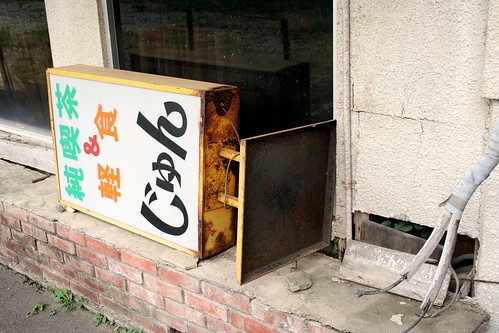1. The Pachinko Parlor
The popular past-time of grandpas has fallen on hard times. Due to changes in gaming laws and pressure from the government pachinko parlors have turned away from big reward-big loss scenarios in favor for low risk-low reward gaming. This has turned away the hardened gamblers. While it still remans profitable, it can no longer pull in as many customers. Those parlors in older centrally located shotengai (shopping streets) like this one have closed down as more people head to larger shopping centers and pachinko parlors on the outskirts of town.
2. The related businesses
This cafe next to the pachinko parlor also went the same way as it's neighbor. One can imagine that it sustained on serving those going to or leaving the neighboring pachinko parlor. Whether or not it is related to the pachinko parlor’s closure is unknown; nevertheless the two events are tied to the general aging of city centers. The urban renewal movement that is rebuilding many of America's downtowns has yet to come to Japan--at least in the same way. I don't know if shotengai (shopping streets), sento and the like are under the threats that their counterparts in America have faced either. Crime being the most important of those threats. Also, suburban development and subsequent shopping centers are servicing a new and expanding lifestyle choice for many Japanese--especially young families.
Old and deterioating shotengai, such as this one I found in Nara prefecture, have an atmosphere and style that is worth paying attention to.

No comments:
Post a Comment